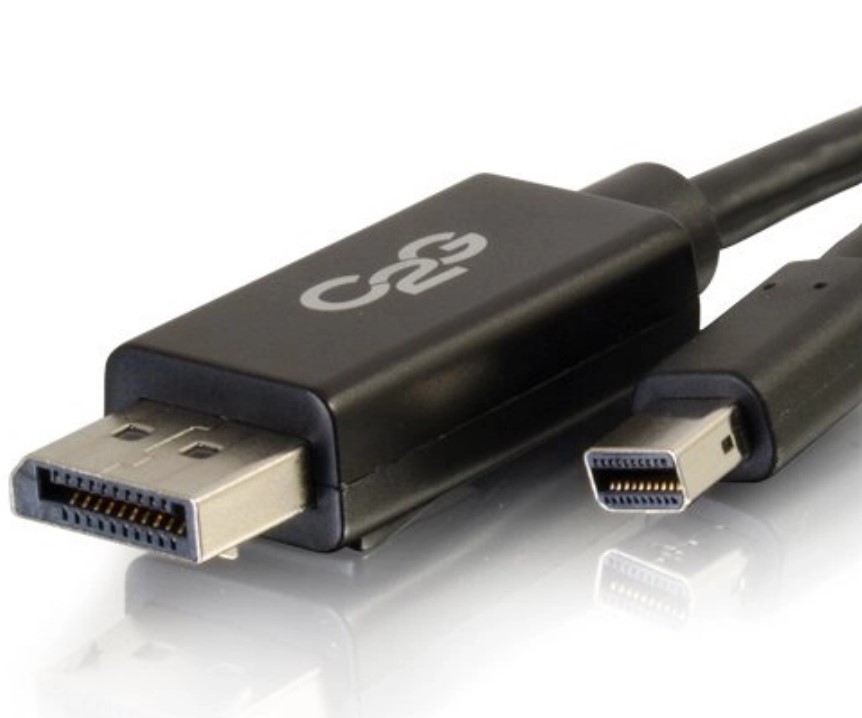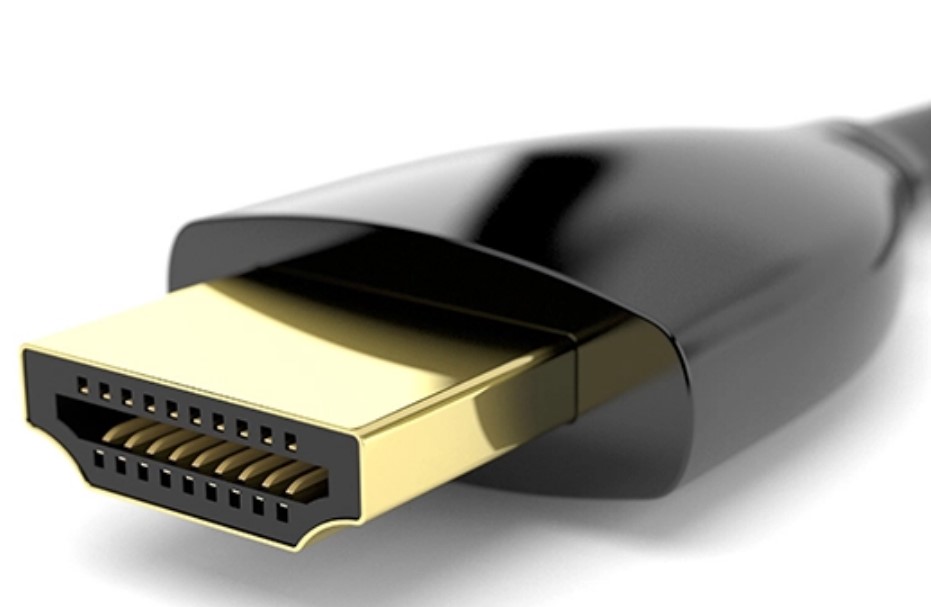Choosing the right monitor is one of the most important things you can do – after all, you spend hours in front of it.
This guide is not highly technical, although it could be if we discussed nits, contrast, gamut, colour accuracy, refresh rates, Blue-Light, inputs, and outputs in detail. Instead, we relate this to Joe and Jane Average and their 2.5 school-age kids. We will exclude gamers and professional video users.
Choosing the right monitor starts with some tech terms and what they mean to you. Use this as a checklist.
Size
Monitors range from 23” to over 48” diagonal screen measurement. Considering most laptops are 13-15” screens, you would think that any bigger size is an improvement. Think of it this way – how do you want to use this extra space?
- If you are happy displaying a single webpage or two A4 pages side-by-side, then 23” is heaps.
- To display three pages, then 27-32” is best.

This also brings the issue of multi-monitors to the fore. For example, I use my 15” Surface Laptop Studio to display Microsoft Outlook email. I use 2 x Samsung UR590, 32” Curved, 16:9, 4K monitors – one for research (web pages) and the other for Word and Windows Explorer. We will talk about how to do that later.

Flat or curved
A single flat monitor up to 32” is best as it can sit directly in front of you on the desk at approx. 500-600mm from your eyes.
Curved monitors are like curved TVs – you don’t see many anymore. But they have a place for multi-monitor setups where you can put two side by side in around 1-metre-wide desk space.
Curved come in Radius – the size of a circle to place these monitors 360° around you.

The human eye can see about 1000R (in width) without moving your head. That is why you see many curved monitors at 1000R or even tighter at 800R (a little extreme). If you plan to use two curved monitors side-by-side, the ideal curve is closer to 1500-2000R. Larger monitors tend to be 3000-4000R and are primarily for single gaming monitors.
Curved monitors have some other advantages – 1000R is the vision sweet spot, they can be more immersive, and your eyes are curved, so why not your monitor?
Colour/Gamut
Most monitors are LCD, using side or backlit LEDs. There are two main panel types – VA (narrower off-angle viewing but higher contrast) and IPS (wider off-angle viewing and lower contrast). It does not really matter for a monitor, as you should be sitting in front.
Some monitors add Quantum Dot (QD, ULED) to enhance colours; if that is what you need, it is a good option.
Recently some monitors have started to use the more expensive QD/Mini-LED and OLED panels. These are not covered here.
These are typically 8-bit/16.7m colour screens with 80+% sRGB colour gamut (higher is better)
SDR/HDR/VESA certification
Almost all monitors are Standard Dynamic Range (SDR) because they are under 300 nits and have contrast ratios of around 1000/1500:1. What that means is that in movies, you lose detail in dark and highlighted scenes. Monitors are not meant for movies.
Some monitors may have VESA DisplayHDR certification, but it is not like TVs. There are several levels
- 400 (8-bit, no local dimming, 400 nits peak in 2% of the screen – most good monitors can do this)
- 500 (8-nit, Local dimming, 500 nits peak in 2% of the screen)
- 600 (10-bit, increased local dimming zones, 600 nits peak in 2% of the screen)
- 1000 (10-bit, 2x local dimming, 1000 nits peak in 2% of the screen
- 1400 (10-bit, 4x local dimming, 3.5X greater contrast than 1000, 1400 nits peak in 2% of the screen
- True Black 400 – reserved for active dimming OLED and perhaps Mini-LED
- Treu Black 500
- True Black 600
Bottom line – standards are nice, but they don’t mean much to a consumer.
Ratio and resolution
You may have heard of the 16:9 widescreen ratio (It is used in TVs) or 16:10, and that means:
- 1920 x 1080 (16:9, 1080p or FHD, 2,073,600 pixels)
- 1920 x 1200 (16:10 WUXGA, 2,304,000 pixels)
- 2560 x 1440 (16:9 2K or QHD, 3,686,400 pixels)
- 2560 x 1600 (16:10 WQXGA, 4,096.000 pixels)
- 3840 x 2160 (16:9 4K or UHD, 8,294,400 pixels)
But there are ultra-wide 21:9 or more that have:
- 2560 x 1080 (21:9 UWFHD, 2,764,800 pixels)
- 3440 x 1440 (21:9 WQHD, 4,953,600 pixels)
- 5120 x 1440 (32:9 DQHD, 7,272,800)

Most modern computers support 16:9 and 16:10 but not all support 21:9 or more. The DQHD usually requires a high-end Nvidia and AMD GPU to drive them.

1080p, 2K, 4K, 5K, 8K, or more
This simply means the number of pixels on the screen, sometimes referred to as Dots Per Inch (DPI) or Pixels per Inch (PPI).
The smaller the monitor, the more densely packed the pixels are. For example, a 27” 16:9 monitor has:
- 1080p has 81 PPI
- 1440p has 108 PPI
- 4K has 163 PPI
- 8K has 326 PPI
That is why most monitors remain at 27-32” so the display does not appear pixelated.
Refresh rate
This is the number of times per second that the image is refreshed. Australia has 50Hz electricity, so a 60Hz refresh is typically 50Hz etc.
- 24/25Hz – typically, movies play at this rate
- 30Hz – considered the minimum for a productivity monitor.
- 50/60Hz – considered ideal for all use
- 100/120Hz – gamers look for this
- 120/144Hz – gamers using high-end video cards
- Higher rates like 165/200/240/390Hz– speciality monitors only.
Most PCs can support up to 4K@50/60Hz external monitor off an HDMI port. Dual monitors may need to run at 4K#30Hz or 1080p@30 or 50/60Hz.
Blue light
Blue Light is the cheapest form of light. It is alleged to disrupt circadian rhythms, but we crave it over warmer candle colour light.

The bottom line is that a low blue light monitor (sometimes called Eye Saver mode) changes the colour temperature from cold (that we like) to warm. We believe Blue Light reduction is only necessary if you are sensitive to high-energy, visible (HEV) light falling in the same category as violet.
In any case, you should take a break every 20-30 minutes and look outside at the sunlight.
Smart monitors and upscale
Very few monitors can upscale native 480/720/1080p/4K content – that is done by your computer. A few recent ‘smart monitors’ run TV Operating systems (Samsung Tizen, LG WebOS, etc.) and are really mini-TVs that can upscale video content.
But more than that, they connect to Wi-Fi (or Ethernet) and can run cloud Apps like Browsers, Microsoft 365 and much more. A smart monitor could, in theory, replace a Chromebook if all you use is the cloud.

Stand type and mounting
The majority have a centre pedestal and supporting legs or plates. While a monitor may be 32” diagonal, you may need 200-300mm to accommodate the legs.
Flat monitors are easy to wall-mount using standard VESA plate sizes. Curved monitors are more challenging.
There are a range of third-party mounts that can clip onto a desk, hold two monitors or allow for portrait use (landscape is standard). Most PCs allow for screen rotation.

Read LG DualUp Monitor Ergo 28MQ780 – a stand-up monitor (review)
Ports
Most monitors have:
- HDMI 1.4 or 2.0, wh sufficient for up to 4K@30/50/60Hz. Most will not have HDMI 2.1 for 4K@120Hz.
- Display Port DP 1.2 or 1.4 – your PC needs to have a Display port (very rare, but Thunderbolt 3 or 4 docks may). Note that you can convert DP to HDMI but not the other way around.
- Some may have older VGA or DVI connectors – these are outmoded and for low resolution.
Some monitors have USB-C ports. If your PC or Dock has USB-C with Alt DP 1.4, you can pipe audio and video over USB-C. Some also have 60/90W USB-C downstream charging, so you can connect and use your laptop and charge it. Some will also have basic dock functionality, like USB ports.
Lag
Unless you are a gamer, most monitors will be around 40ms Grey-To-Grey, which is fine for your use. Gamers want <10ms.
Thunderbolt Docks
Most Thunderbolt 3 or 4 docks support dual monitors – HDMI, DP, and USB-C. The Plugable TBT3 Thunderbolt 3/4 docking station range has some models with both HDMI and DP Ports, and one has two of each.
Thunderbolt is the best way to support dual monitors up to 4K#30/50/60Hz. If all you have is USB-C 3.1 Gen 1 5Gbps or USB-C 3.2 Gen 1 (10Gbs), you can usually get a low-cost dongle that supports 4K @30Hz or 4K@50/60Hz.

Best Brands
Interestingly most monitor makers buy panels from third parties and add their electronics. Even the biggies like Samsung and LG often use third-party panels in their lower-cost monitors. Their gaming bands are in brackets). Our experience is that all brands perform well – it is down to warranty length, support and perhaps design.
- Acer (Nitro and Predator)
- AoC
- ASUS (ROG and TUF) as well as professional models like ProArt
- BenQ
- Dell (Alienware)
- Gigabyte
- HP (OMEN)
- Lenovo
- LG (UltraGear)
- MSI
- Philips
- Prism+
- Samsung (Odyssey)
- ViewSonic
Can I use a 1080p or 4K TV as a monitor?
Technically yes, but as the smallest TVs start at around 42”, these are a bit overkill on a desk. In addition, you would need to sit a lot further away. If you do make sure it is a 4K!

CyberShack’s view – Choosing the right monitor is more about developing a shopping list
We have not mentioned things like colour gamut (DCI-P32 for movies, Adobe RGB and Pantone for designers and videographers) and other professional features like the ability to colour calibrate etc. Read Samsung 4K ViewFinity S80PB Monitor.
Why? Because these are not things, you need to worry about for home use. Nor should you be upsold because you will never use them.
Joe and Jane Average should buy:
- Good: 27” flat 1920 x 1080, 16:9 with HDMI, and will pay from $200-400.
- Better 32” flat 1920 x 1080 will pay from 400-500.
- Best 4K flat 3840x 2160 will pay from $550 to $700.
If space is an issue and you like the ideal dual monitors, look at curved versions. Avoid widescreen 21:9 unless you are sure it works with your PC. USB-C connection will add $50-100 to the price.
And finally, look for bargains at computer resellers. For example, the LG 27” MP400H retails for $320 but is $199 at places like Scorptec, mWave or UMart. And these companies also tend to have BenQ, Philips and lesser-known brands.
Choosing the right monitor, Choosing the right monitor, Choosing the right monitor, Choosing the right monitor












Comments